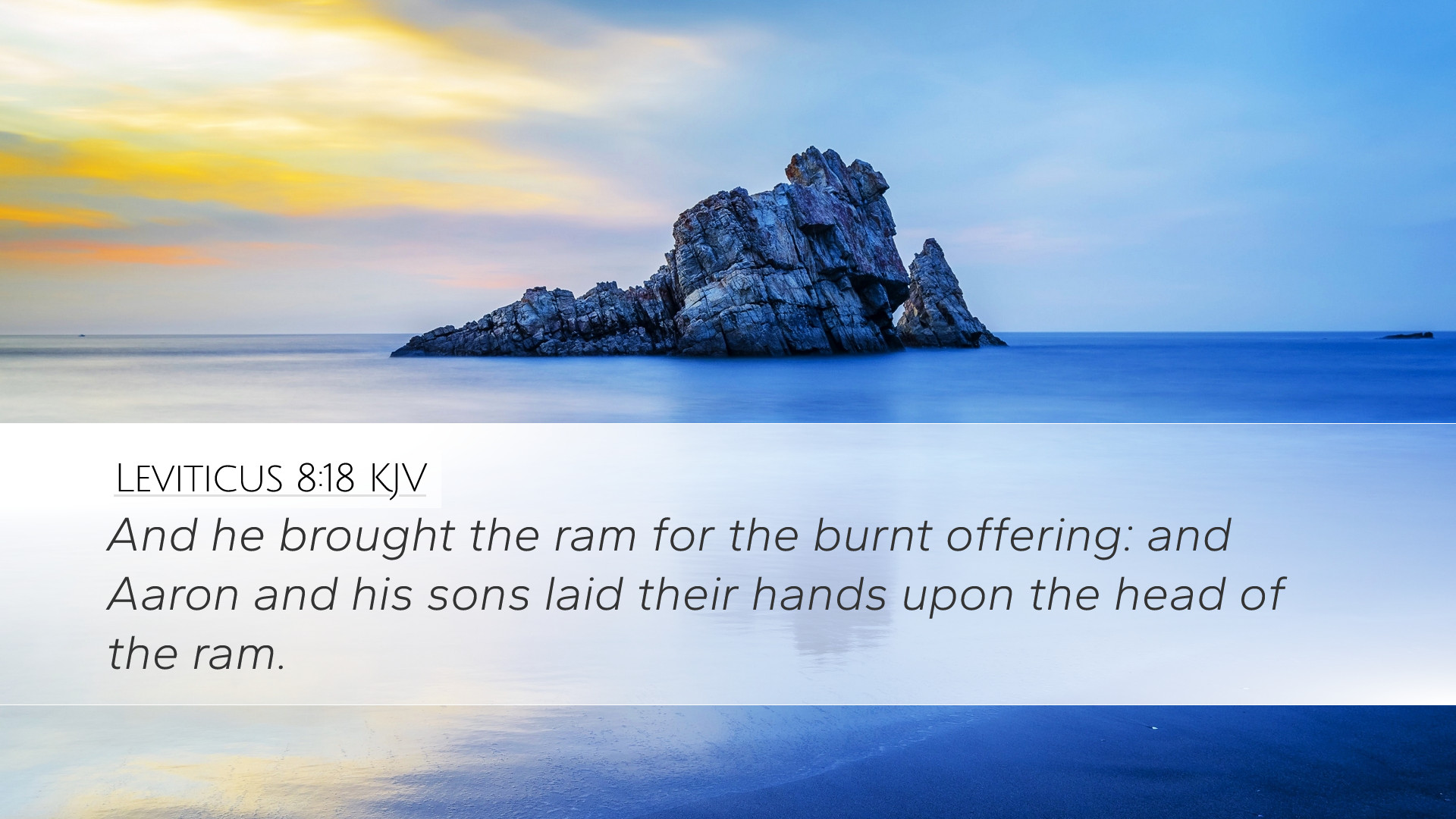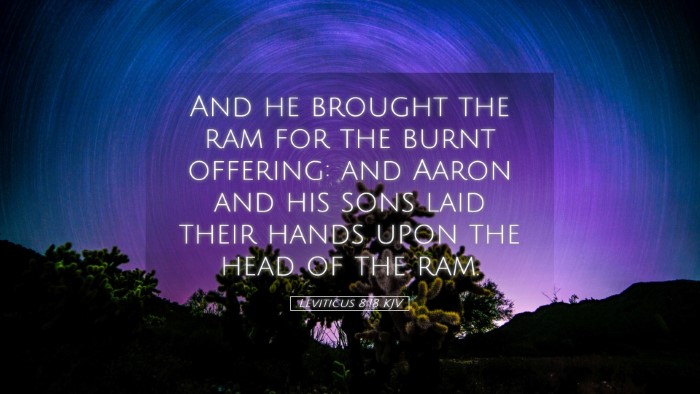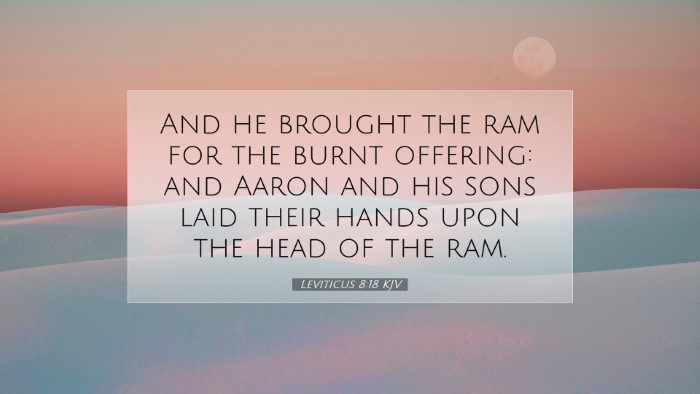Commentary on Leviticus 8:18
Verse: "And he brought the ram for the burnt offering: and Aaron and his sons laid their hands upon the head of the ram." (Leviticus 8:18)
General Overview
The act of laying hands upon the burnt offering is significant, signaling the transfer of responsibility and the identification of the offerer with the sacrificial animal. This moment marks an essential element in the consecration of Aaron and his sons to the priestly office.
Thematic Significance
- Consecration of the Priests: This verse captures an essential aspect of priesthood – the initiation and consecration process required for service.
- Symbolism of Sacrifice: The ram offered exemplifies the idea of atonement and the seriousness of approaching God. The laying of hands represents the identification of sin and guilt being transferred to the innocent representative.
- Role of the Offerer: It emphasizes the participatory role of the priests in their relationship with God – consciously taking part in the act of worship through sacrifice.
Insights from Public Domain Commentaries
Matthew Henry's Concise Commentary
Matthew Henry highlights the significance of the burnt offering as an atonement for sin. In his analysis, he emphasizes that the laying on of hands signifies a solemn act of transferring guilt, which is pivotal in understanding the sacrificial system outlined in Leviticus. Henry notes, “This ceremony was intended to illustrate the transfer of sin from the people to the victim, demonstrating God’s appointment for the reconciliation of His people.”
Albert Barnes' Notes on the Whole Bible
Albert Barnes focuses on the ritualistic aspects and procedures surrounding the sacrifices. He details that the burnt offering was a voluntary act of worship, reflecting a person's complete dedication to God. Barnes states, “By laying their hands upon the head of the ram, Aaron and his sons symbolically confessed their sins and guilt, thus marking the significance of their role in interceding for the people they would serve.” This act also formalizes the solemnity of their priestly duties, denoting both initiation and a commitment to sacrificial service.
Adam Clarke's Commentary
Adam Clarke provides in-depth details regarding the meaning of burnt offerings in ancient Israelite culture. He notes that the rams offered were a significant part of the ritual, showcasing the seriousness with which sacrificial offerings were treated. Clarke suggests, “The ram is a figure of Christ; as such, its sacrifice foreshadows the ultimate offering that cleanses not just Aaron and his sons but all of humanity.” He expounds on the concept that the laying of hands was a precursor to the greater redemptive work achieved through Christ, emphasizing the continuity of God's plan through the sacrificial system.
Theological Implications
- Solemnity of Sacrifice: The act of laying hands on the ram reminds us of the seriousness of sin and the required atonement. Through the sacrifice, there is a recognition that sin has severe consequences which must be addressed.
- Christological Foreshadowing: This verse finds its fulfillment in the New Testament through Jesus Christ, the perfect sacrifice who bore the sins of many. Just as the ram’s life was given for Aaron and his sons, Christ’s sacrificial death provides eternal redemption.
- Call to Ministry: For modern clergy and believers, the act of consecration serves as a model for understanding their calling. The commitment to lead is accompanied by the duty of representing God’s holiness and grace.
Conclusion
Leviticus 8:18 encapsulates vital tenets of the Israelite sacrificial system and offers profound insights for contemporary faith practice. As leaders and scholars reflect upon this verse, it serves as a reminder of the sacredness of ministry, the necessity of atonement, and the eternal significance of Jesus Christ as the ultimate Lamb of God.


